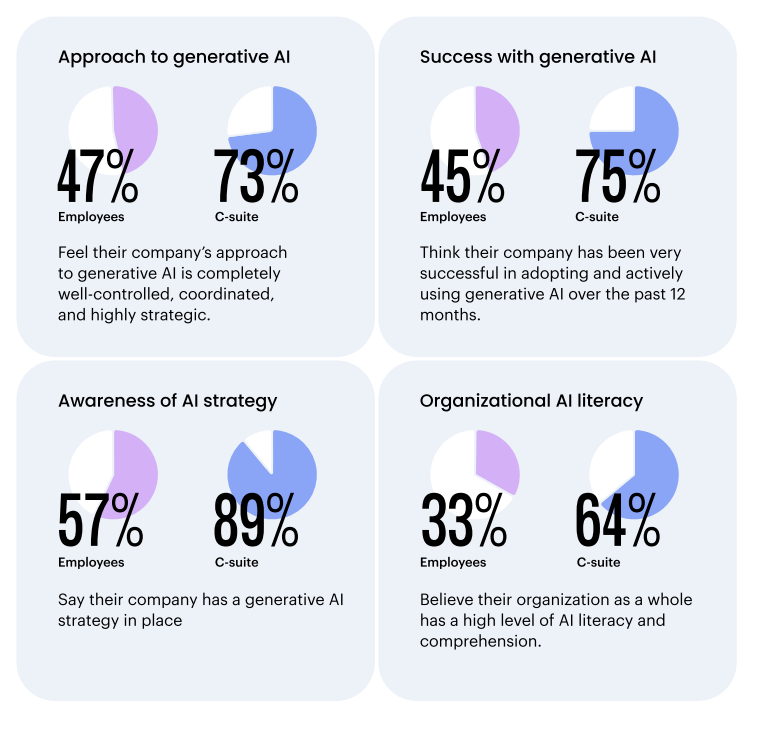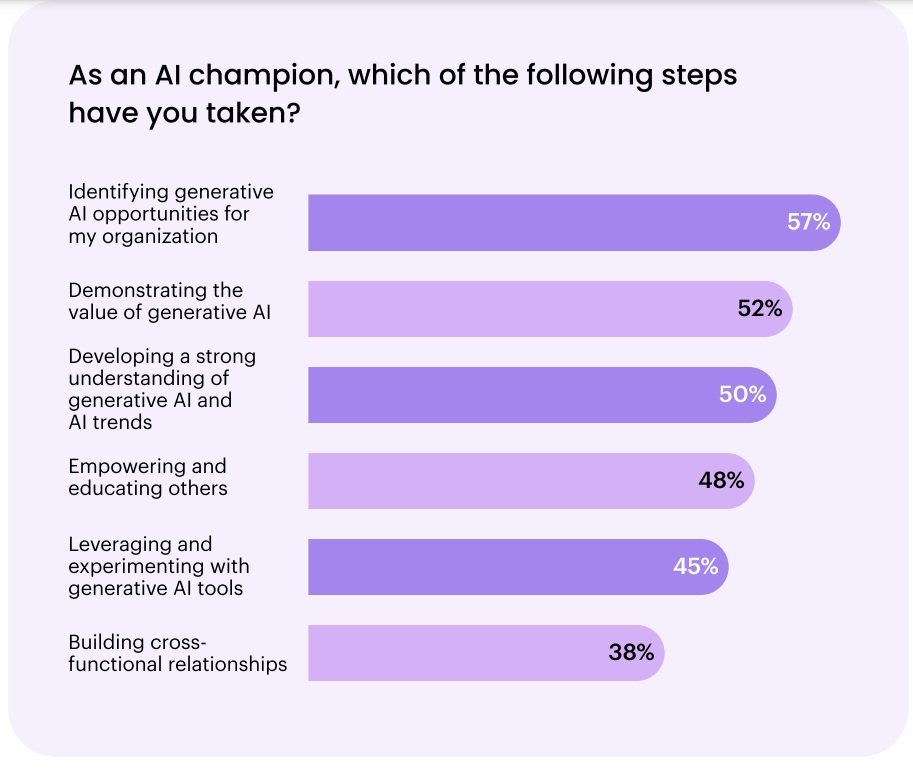The AI Leadership Imperative—Why 2025 Demands a New Breed of Decision-Maker
AI is no longer an emerging force—it’s embedded in the foundation of every competitive organization. Yet in trust companies and family offices—where the stakes are discretion, legacy, and multi-generational relationships—AI is fast becoming a double-edged sword. It can reinforce the principles we stand for… or quietly unravel them.
The biggest differentiator isn’t the tools you choose. It’s the person leading them.
The latest 2025 Writer AI Survey of 1,600 U.S. knowledge workers (split evenly between executives and employees) gives us a blunt view of the generative AI terrain—one full of ambition, investment, and dysfunction.
Voices of AI Adopters
73% of companies now spend over $1M annually on generative AI
81% of employees have used AI for over six months
Common use cases: content creation, data analysis, and task automation
Sectors include financial services, tech, healthcare, and retail
But investment doesn’t mean impact. And optimism doesn’t mean alignment.
Key Findings:
Widespread AI Optimism
88% of employees and 97% of executives say AI has been beneficial
90% are optimistic about their company’s approach
Most see AI as a growth driver—not a cost cutter
Adoption Challenges
72% of companies face major adoption hurdles
Top blockers: skills gaps, disconnected tools, and internal friction
Power Struggles
71% of C-suite leaders say AI is built in silos
Misalignment on who owns AI: 67% of execs say “we do,” only 35% of employees agree
Tensions rising between IT and business units
Perception Gaps
75% of executives say AI initiatives are successful
Only 45% of employees agree
43% accuse leadership of “talking big but not delivering”
Just 36% can point to actual ROI from AI initiatives
Employee Retaliation
41% of Gen Z and Millennial workers actively resist AI rollouts
Many cite job security concerns, poor communication, and lack of trust
35% pay for better AI tools with their own money
This is more than operational misalignment. It’s a systemic breakdown in leadership.
Why Trust Companies and Family Offices Are Especially at Risk
In our world, trust isn’t a brand value—it’s the product. We operate in the background, safeguarding wealth, relationships, and legacies. Our clients expect confidentiality, continuity, and clarity across generations.
But AI doesn’t automatically reinforce those things. In fact, without the right leadership, it threatens them. When AI implementation lacks centralized, strategic leadership:
Employees act independently: 35% purchase their own tools
Shadow AI usage rises: 27% bypass security protocols
Compliance weakens: siloed AI tools evade oversight
Trust erodes—internally and externally
The tools aren’t failing. The execution is. And that’s a leadership issue.
The Most Critical Role You're Probably Missing: The AI Leader
You don’t need someone who understands AI. You need someone who understands your business, your people, and how to lead transformation inside a trust-based environment.
This role isn’t a tech lead—it’s a trust architect.
They must:
Translate the firm’s long-term vision into operational AI systems
Create alignment across C-suite, client-facing teams, and operations
Build bridges across generations—respecting legacy while introducing change
Design AI governance that honors discretion, ethics, and compliance
Champion adoption through empowerment, not mandates
This person becomes the translator between code and culture, the strategist between tools and trust, the catalyst between stagnation and sustainable growth.
What Happens Without the Right AI Leadership?
Investments scatter across disconnected tools
Employees resist, undermine, or abandon rollouts
Compliance weakens, exposing the firm to regulatory and reputational risk
Clients lose confidence—not because of what you did, but how you did it
Internal silos deepen, strategy falters, and AI becomes a sunk cost
AI doesn’t fail. Change fails when leadership is absent.
Three Non-Negotiable Strategies to Unlock AI Value in 2025
Based on the survey data, three clear pathways to success have emerged:
1. Formalize AI Strategy—and Invest Seriously
80% of firms with a formal AI strategy report success
That drops to 37% for those without one
There’s a 40% success gap between top and bottom AI investors
2. Empower Internal AI Champions
77% of employees are willing to become AI champions
98% want to help build or refine internal AI tools
Companies that elevate these voices see higher engagement, retention, and innovation
3. Partner With AI Vendors Who Do More Than Sell
98% of executives say vendors should help shape AI strategy
94% are unhappy with their current partners
Top vendor gaps: security, integration, training, and actual support
What defines a good tech partner in this space?
They customize tools to your workflows
They train your people with context, not generalizations
They pilot, measure, and improve
They prepare your data, your culture, and your leadership for scale
And they help you track the actual ROI of transformation
In a Business Built on Trust, Leadership is the Most Advanced Technology
AI isn’t a threat to trust companies and family offices—it’s a multiplier. But it only multiplies what’s already there.
So, with the right AI leadership in place, it multiplies clarity, capacity, continuity—and competitive edge. This isn’t about tools. It’s about who leads the tools.
The stakes are clear: AI doesn't fail; lack of leadership does. Without strategic AI stewardship, investment becomes waste, trust becomes tension, and innovation becomes resistance.
As we enter a future defined by generative AI, it’s never been clearer: the most critical hire isn't just someone who understands AI—it's someone who understands your unique business, your people, and your legacy.
AI multiplies what's already there: If you have clarity and cohesion, it amplifies growth and trust. Without it, it magnifies confusion and risk.
AI leadership isn’t optional—it’s mission-critical.

